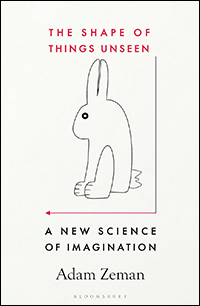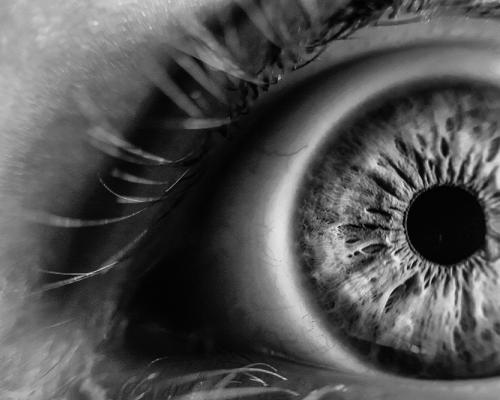Book review - The Shape of Things Unseen: a new science of imagination
Denise Winn reviews 'The Shape of Things Unseen: a new science of imagination' by Adam Zeman (Bloomsbury Circus, 2025) £25.00
THIS book merrily canters informatively through everything remotely connected with imagination. The neurologist author ranges through the different forms imagination takes and different ways that people imagine to Copernicus’s discoveries, personality theory, Archimedes’ Eureka moment, ‘flow’, teamwork, brain scanning and mind reading and yet more – including brain networks, evolution of human culture and development stages of the brain right from conception. Indeed, he is clearly enjoying himself, roaming wherever he wants to go, a bit like imagination itself. There is a lot to learn, while the illustrations and potted summaries of what we already know are useful, too.

Early on, he puts imagination in the context of predictive processing and emphasises the importance of play in developing our imaginary worlds. Apparently it is normal to daydream for 25 to 50 per cent of the time that we are engaging in our daily activities. As the scientist who gave aphantasia its name, he has much of interest to say about that – one observation being that those with this way of imagining seem better able to live in the present and move on quicker from setbacks, unlike those who are engaged by vivid, perhaps intrusive, visual reminders of the past or thwarted future.
He explains how, during non-REM sleep and moments of rest, the hippocampus in lab rats ‘replays’ whatever maze learning they have engaged in during the day, enabling it to become a memory. There is growing evidence that this happens in our brains, too. He also gives a lovely description of REM sleep, which accords with HG understandings.
In his section on what he calls the besieged imagination, Zeman looks at hallucinations and visions and the physical creation of symptoms that we now term functional disorders (over-attention to certain external or internal experiences is likely to be one of the causes) as well as the healing role of placebos, and imagination-based therapies for trauma.
Imaginative potential is so firmly at the core of our existence that visions can even be generated by damage to the brainstem, despite this being, in neuroanatomical terms, “light years away from the visual cortices. … These striking experiences illustrate the delicate balance between excitation and inhibition, sensation and expectation that normally aligns our experience with the reality around us. They reveal the unsuspecting creativity of the brain – its constant, invisible role in predicting the world into being,” Zeman eloquently informs us.
And, finally, Zeman points out, what sets human imagination apart from whatever form it takes in other animals (such as sensory images during dream sleep) is that, while our imaginings are personal, “they are profoundly social”. Only we can share what comes into our minds and it is this we have to thank for the innovative enrichment of our created environments – not all good but stunning in their complexity.
Latest Tweets:
Tweets by humangivensLatest News:
HG practitioner participates in global congress
HG practitioner Felicity Jaffrey, who lives and works in Egypt, received the extraordinary honour of being invited to speak at Egypt’s hugely prestigious Global Congress on Population, Health and Human Development (PHDC24) in Cairo in October.
SCoPEd - latest update
The six SCoPEd partners have published their latest update on the important work currently underway with regards to the SCoPEd framework implementation, governance and impact assessment.
Date posted: 14/02/2024











